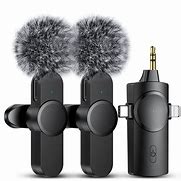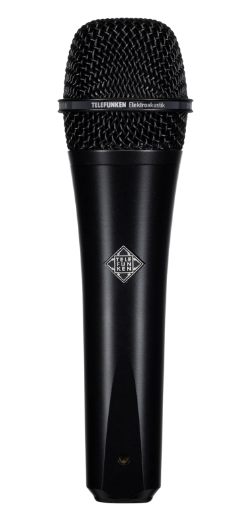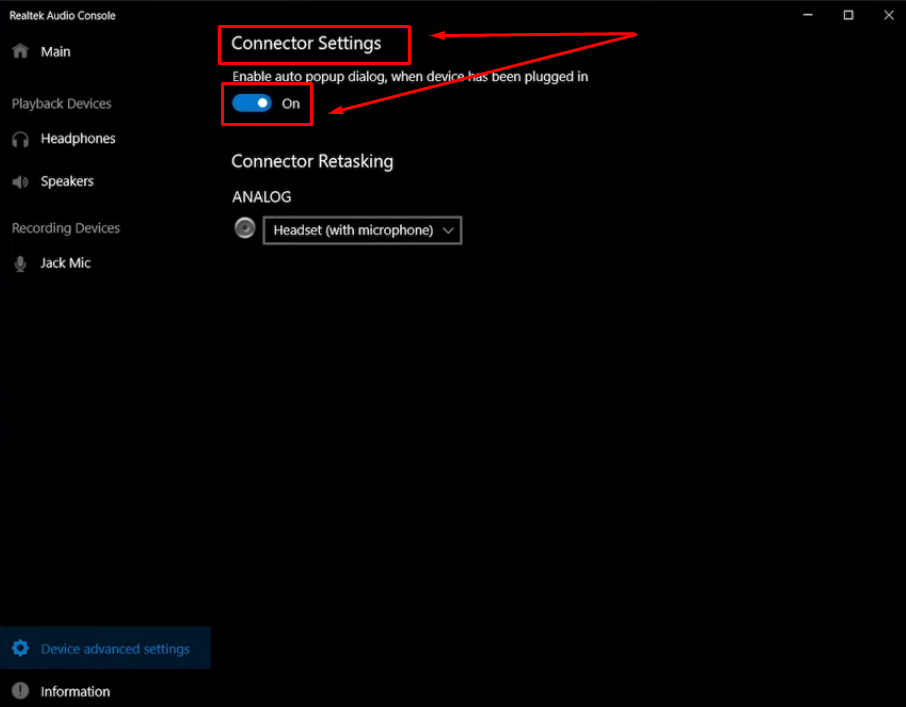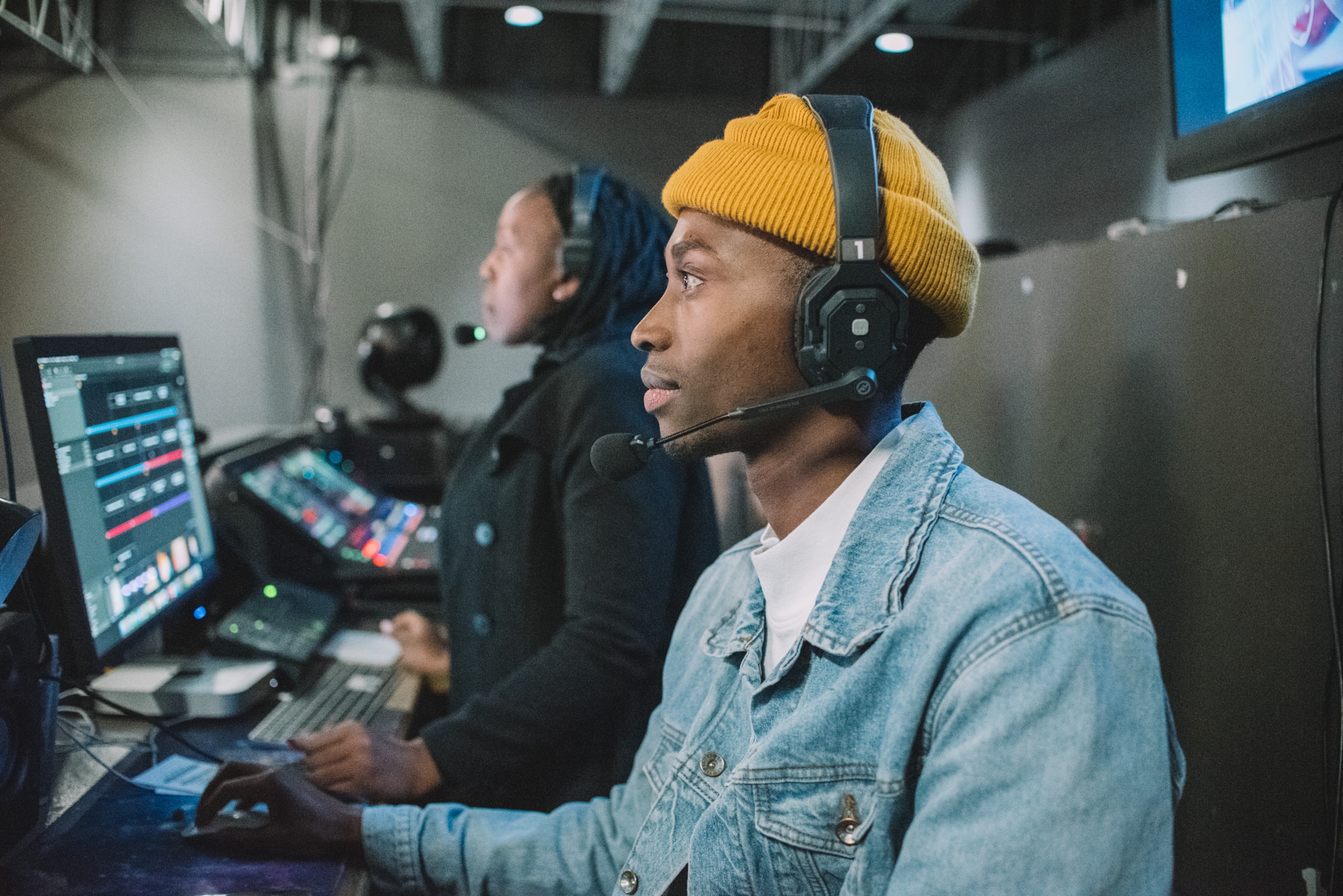With technological developments, microphones have adapted to meet the modern demands of professionals and enthusiasts. The diversity and versatility of the mic are exceptional for capturing detailed sounds in different environments. Some mics are excellent for live performances, while others are designed to capture the sonic nuances of studio recordings.
Understanding different types of microphones and their distinct features is crucial to selecting the one that best fits your specific needs. So, this guide develops an understanding of the different kinds of microphones and how they shape digital audio.
What is a microphone?
Microphones capture sound waves in the air and convert them into electrical signals. The mic’s output transmits the signals to amplifiers, mixers, or audio interfaces for recording, which converts them back to sound waves.
The precise movement of the diaphragm is crucial in delivering clear, natural sound and not just transmitting electrical signals. Different microphones capture sounds uniquely due to variations in their distinct sensitivity or designs.
Understanding the Polar Patterns
The polar pattern determines the directionality or sensitivity from which the mic picks up sound. Every microphone has its unique pickup pattern, and understanding it will help you minimize the background noises. So, hereunder are the common polar patterns that will help capture clear vocals.

- Cardioid Pattern
Cardioids, known as unidirectional, focus on capturing the sound in front of the capsule. It isolates the sound from the unwanted sounds of the sides or background. So, the name cardioid comes from its unique heart-shaped pickup pattern, as shown below.
It makes cardioid perfect for live performances or capturing vocals in a room with ambient noise. Also, it is best used on instruments like guitars or drum kits for actively recording in the studio or live.
- Supercardioid
It’s a more focused version of the cardioid. With a narrower sensitivity, it rejects sounds from the sides, but its small lobe picks from the back at a lower level. So, it further improves the isolation of the sound from unwanted noises.
Because of its enhanced ability to reject noises, it’s perfect for loud sound sources such as live performances or untreated acoustic rooms.
- Hypercardioid
The hypercardioid lies between the bidirectional and cardioid patterns. It actively rejects noises from the sides but picks sounds from the back of the capsule. Its improved directionality with maximum isolation makes it perfect for capturing vocals or instruments during live or in the studio.
So, the hyper-cardioid is perfect with its minimum audio leak compared to the cardioid microphone.
- Omnidirectional
An omnidirectional pattern captures sound from all directions. These mics produce natural sounds and are perfect for studio recordings with controlled ambient noise. It delivers rich-detailed audio for live recording as long as the noise level is low.
The omnidirectional mic lacks background noise rejection and becomes problematic when used in an untreated room.
- Bi-Directional
It equally picks sound from the front and back of the mic but effectively rejects noise from the sides. This polar pattern follows a unique shape of “8” called the “Figure 8” pickup pattern.
This sensitivity is ideal for stereo recordings or picking two audio sources simultaneously. It’s perfect for the studio to capture two instruments or singers with minimal audio leaks. Some ribbon and large diaphragm condenser mics work on a bi-directional pattern.
- Lobar/Shotgun
Lobar is a modified version of the hypercardioid and supercardioid, so it only picks sound directly in front of it. With a highly directional pattern, it captures sound only at a distance and perfectly rejects off-axis sounds. So, it’s suitable for recording in noisy environments and used in theater or films.
Different kinds of Microphones
Each microphone has a unique way of precisely capturing and transmitting sound signals. Due to this, microphones come in versatile designs and technologies, each with unique features and capabilities. So, understanding these mics and their use will help achieve optimal sound quality.
Dynamic Microphones

The simple yet robust design of dynamic microphones enables them to withstand high-pressure levels without affecting the quality. For this, the microphone converts the sound waves into electrical signals using the electromagnetism principle.
Inside the capsule of dynamic microphones, a conductive coil or thin metallic diaphragm is attached to the membrane. When sound waves hit the mic, the coil motion inside the magnetic gap generates electrical signals corresponding to the sound.
That’s why dynamic mics are sometimes called “moving coil” microphones.
The rugged, rough, and durable design makes them exceptional for live performances or recording high SPL without distortions. Its versatile cardioid to hypercardioid polar patterns capture vocals or instruments with sharp audio.
Dynamic mics have lower sensitivity and handle more gain for premium audio quality. So, with proper control, these mics capture drum kits without distortions or disruptions.
Which Dynamic mic should you buy?
Their robustness and sturdy design make dynamic mics cheaper and better at handling high-pressure levels. So, select a microphone that suits your needs and recording environment.
- Shure SM 58 is ideal for live performances
- Beyerdynamic M88 TG is perfect for drum kits, guitar amps, and vocals
- Sennheiser MD 421-II is multipurpose and has excellent sensitivity for precisely capturing studio recordings.
Condenser Microphones
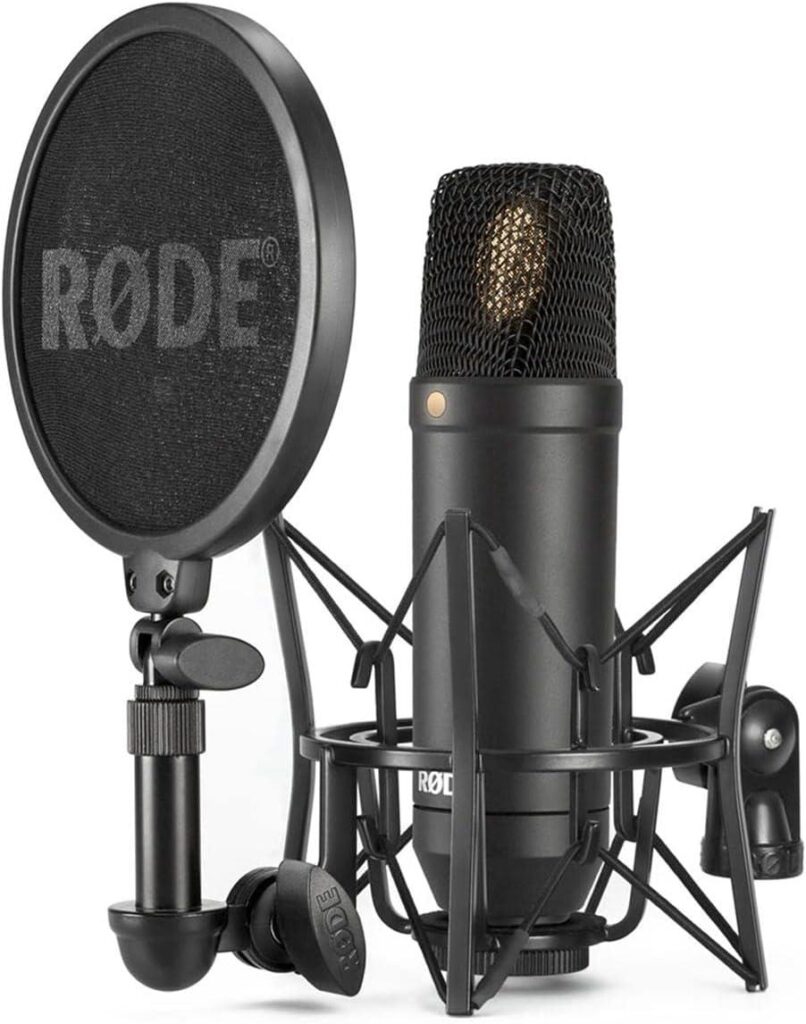
Unlike dynamic mics, condenser microphones are sonically sensitive and more accurate, making them great for vocals and instruments. For ultra-clarity, condenser mics use thin diaphragm and backplate capacitors to convert sound waves into electrical signals.
Work: To pick up high frequencies, the internal components of the microphone include a capacitor made of two metal plates. When sound waves hit the diaphragm, it moves back and forth relative to the fixed metal plate. It creates an electric charge known as “capacitance,” resulting in small voltage changes and electric signals.
Therefore, condenser mics require external power, phantom power, to charge and deliver the amplified audio signal.
With a unique design, condenser mics are susceptible and provide rich-detail audio. The broader frequency response is crucial for high-quality vocal or instrument recordings. Condensers offer high-end frequency, which enables fast transient response. So, these mics capture sharp details of studio instruments without distortions.
Condenser mics have two basic categories: Large Diaphragm Condenser mics have a diaphragm of 1 inch or more and are perfect for recording vocals. Small Diaphragm microphones respond effectively to high frequencies and are ideal for instrument recordings.
LDC microphones are versatile, allowing you to switch between multiple polar patterns or customize the pattern to fit the best vocals.
Which Condenser mic should you use?
- Rode NT1 is ultra-quiet, versatile, and captures crisp clarity.
- Lewitt LCT 940 is perfect for beginners with multiple polar patterns.
- Beyerdynamic M90 Pro X is ideal for stereo recordings of vocals and instruments.
Ribbon Microphones

Ribbon mics, known for their classical vintage reproduction, are exceptional for recording multiple instruments simultaneously. The microphones’ high-detailed natural sound reproduction and warmth make them ideal for recording vocals and musical instruments.
Ribbon mics work on the same principle of electromagnetic induction. But instead of a moving coil, it uses a rectangular diaphragm of thin aluminum surrounded by magnets. When sound waves hit the diaphragm, it vibrates and creates electrical signals.
Due to this, these mics require no external power, while some “active ribbon mics” with active circuitry require “Phantom Power.” Most ribbon microphones feature figure-8 or bi-directional pattern, picking sound from the front and back.
So, after careful positioning during studio recordings, the microphone removes the unwanted distortion and increases the frequencies. The mic perfectly mimics humans to produce natural sounds. With a broader frequency response, it’s ideal for classical music with rich details in the studio.
Which Ribbon mic should you buy?
- Vintage King AEA R84 provides rich high and low end for natural sound recordings.
- Groove Tubes Velo 8 is affordable and excels in vocals with precision.
- Coles 4038 is a professional studio mic for capturing string instruments.
USB Microphones

The simple plug-and-play design of the USB microphones has simplified the podcasting and recording experience. After plugging into the USB port, the mic quickly powers up and captures sounds from all directions during meetings or content creation. So, it captures a wide range of voices with different pitches or tones.
All microphones have built-in Analog-to-digital converters because of the digital nature of the USB. The mics work the same way, converting the sound energy into electrical signals and turning them into digital signals. It provides portable and affordable solutions for improved audio quality.
They are commonly designed for podcasters, voice-over actors, or streamers with their simple and sturdy design. It allows monitoring and editing of the audio by seamlessly integrating with DAWs. One downside of a USB mic is that it can introduce unwanted noise or distortions when the signal is low.
Which Ribbon mic should you buy?
- Shure MV7 is versatile and designed for professionals.
- Samson Go Mic is portable and an excellent best-budget choice.
Lavalier Microphones

Lavalier mics shape the audio industry’s future with their small, compact size clipped to the lapel or collar. Every mic captures sound uniquely and provides complete freedom of mobility. Connecting the microphone depends on the type of mic and recording device.
Wired Lavalier microphones are exceptional for a professional and affordable audio quality experience. Once connected via Bluetooth, wireless mics allow the freedom to move freely and capture natural sound during recordings.
The lav mic provides hands-free operation for consistent audio quality during public speaking or television. The compact and lightweight size is ideal when the mic needs to be hidden during broadcasting.
For vloggers and content creators, omnidirectional mics capture natural sound perfectly. Besides this, unidirectional mics are good with voice isolation for filmmaking or field recordings. However, modern lavalier mics are equipped with noise-cancellation technology to cancel unwanted and improve the captured sound.
Which Lavalier mic should you buy?
- Hollyland Lark M1 is ultra-compact, lightweight, and provides clean audio. The diverse compatibility and better battery are ideal for content creators.
- Movo WMX-2 Duo is an ideal best-budget choice with clear and clean audio.
- DJI Mic 2 is perfect for content creation with its high-quality audio.
Shotgun Microphones
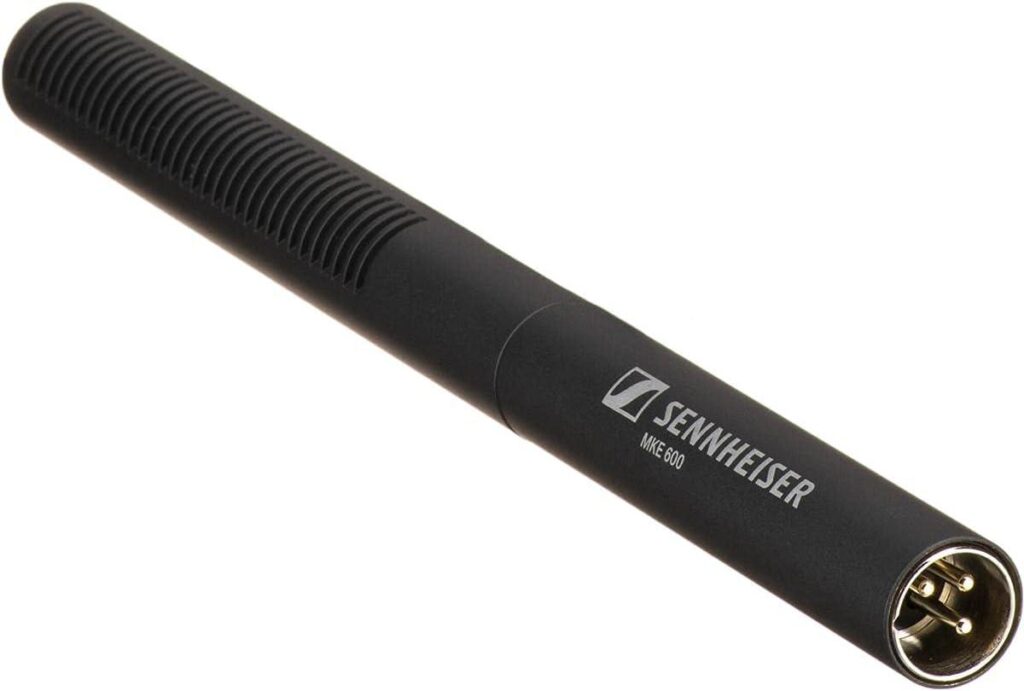
Shotgun microphones are highly directional mics that focus on the sound without getting interrupted by surrounding noises. Their tight polar pattern makes them ideal for capturing crystal-clear sound in noisy environments.
After mounting the shotgun microphone on the boom pole, it must be positioned close to the sound source. If the microphone is away, the audio will faint or distorted if placed close to the sound source. As these mics focus on delivering quality, offer no amplifications, and rely on the electronic amplification of your amplifier.
The microphone works on the “waveform interference” principle, allowing desired or on-axis sounds to reach the diaphragm. Off-axis or unwanted sounds entering the mic from different angles will phase out and cancel each other.
Short shotgun mics are perfect for close-up recordings, while long shotgun mics are better for long-range shots. So, these mics capture sounds precisely and without distortions during filmmaking or live theater performances.
Which Shotgun mic should you buy?
- Rode NTG-3 is ideal for professional filmmaking, television, or broadcasting.
- Sennheiser MKE600 is ideal video or camcorder microphone.
Boundary Microphones

After seamlessly mounting or placing on walls or tables, boundary mics provide a creative and sonic recording experience. The microphone is exceptional in picking up the sound reflected off the surface where it’s mounted. Therefore, it picks everything during meetings without the need for additional mics.
Flat surfaces are ideal for boundary mics because they specifically work on picking reflected sound. Therefore, these mics have different polar patterns and select sounds from varying directions, but they are expensive.
Also known as a Pressure Zone Mic, it precisely captures reflected sounds and is highly sensitive. With a broader frequency response, the microphone seamlessly blends with the surrounding environment for an aesthetic experience.
Using switchable mics provides more flexible control over “always on” microphones. However, wireless boundary mics offer flexibility for capturing crisp natural sound for meetings or conferences. These mics intelligently understand speech and deliver balanced audio recordings.
Which Boundary mic should you buy?
- AKG Crown PCC-160 is a professional boundary layer microphone.
- Shure MX392 is ideal for bedrooms or conference room tables.
Binaural Microphones

As human ears can locate sounds at a 360-degree sound field, binaural microphones are designed to produce a natural hearing experience. Also known as stereo mics, they employ a unique technique to capture sound that mimics the human ears.
Binaural consists of two small omnidirectional microphones positioned at a similar distance between the ears. Usually, the mics are housed inside a dummy head to understand human perception. When recording, each microphone captures sounds from its respective direction, like human ears.
During playback, listening to binaural audio with headphones provides an immersive experience of being in the place where the sound was recorded. These mics are known for their spatial accuracy and enriching 3D audio experience.
The microphone’s unique versatility enables it to work with diverse audio recording software, ensuring a realistic experience. Binaural mics are exceptional, providing an immersive three-dimensional podcast and music listening experience.
Which Binaural mic should you buy?
- 3Dio FS Binaural Microphone is the popular mic for ASMR, VR, studio, or field recordings.
- Neumann KU100 is ideal for an ultra-realistic 3D audio experience.
FAQs
What is the difference between dynamic and condenser microphones?
Dynamic microphones work on the principle of electromagnetic induction and can work without external power. The rugged and durable design enables the microphone to handle higher sound pressure levels than condenser mics. Dynamic mics are commonly used for live recording or broadcasting.
Condenser mics are susceptible and have a higher frequency response than dynamics. These mics are louder and capture details with precision.
How do I choose the right microphone for my needs?
Choosing the right microphone requires careful analysis of your specific needs and requirements. So, selecting the best mic depends on the following key factors:
- What are you planning to record, and where are you recording?
- Consider frequency response and microphones’ polar patterns
- Microphone sensitivity and sound pressure level handling
For instance, dynamic mics are perfect for live performances, while condensers are suitable for studio recordings.
What is phantom power, and why do condenser microphones need it?
Phantom power delivers DC to power the active electric components through the mixer or audio interface. Microphones such as condenser mics with built-in active electronics require phantom power to amplify the signals smoothly.
Condenser mics are more sensitive, and phantom power is essential to transport the signal and is preferred in studio recordings.
Can I use a USB microphone for professional recording?
Yes, USB microphones with a plug-and-play design capture professional-quality audio during home studio recordings. However, carefully considering microphone type and polar patterns is essential for professional studio recording.
How do I properly maintain my microphone?
Proper maintenance and care of microphones are crucial to enhance longevity and optimal performance. So, follow the enlisted guidelines for maintaining the microphone:
- Always store microphones in a plastic bag
- Use pop filter during vocal recordings
- Gently clean your microphone with a brush to remove accumulated dust
- Avoid shaking and dropping during handling
- Ensure correct levels of phantom power are supplied
What are the best practices for recording with a Lavalier microphone?
Lavalier microphones require attention to detail for maximum effectiveness and a natural-sounding experience. Here are some best practices to achieve high-quality audio:
- Securely attach the mic to clothing, 6-12 inches away from the sound source
- Select the ideal placement for mounting
- Avoid interference or distractions during movement
- Test and adjust the microphone placement
- Use a windscreen or foam cover to minimize background noises
- Monitor audio levels to maintain audio quality
How do I reduce background noise when recording with a microphone?
Background noises ruin the audio, lower the credibility, and make the post-editing process difficult. There are some practical ways to minimize background noise during recording:
- Record in a quiet place with minimum ambient noise
- Choose directional or mics with noise-cancellation technology
- Adjust microphone gain and input level
- Position the microphone close to the sound source
- Use a pop filter or windscreen
- Use acoustic treatments to minimize sound reflections
- Monitor and edit your audio to remove background noises
What is a polar pattern, and how does it affect microphone usage?
The polar pattern describes the directionality of the mic. It determines the mic’s sensitivity to capturing sound signals at different angles. So, common polar patterns include:
- The cardioid polar pattern is heart-shaped and sensitive to sound coming from the front.
- Omnidirectional picks sound from all directions.
- Figure-8 or Bidirectional captures from the front and rear of the mic.
- Supercardioid is sensitive to the front but also sensitive to the sides and rear.
So, polar patterns determine the directionality and off-axis rejection of the mic. Also, it affects the stereo imaging and spatial characteristics of the microphones.
Can I use a shotgun microphone for music recording?
Yes, shotgun microphones can be used for music recording, but it depends on the type of mic and sound qualities. Shotgun mics are highly directional and are exceptional in isolating the voice during ambient studio noise. However, careful positioning of the microphone is crucial to avoid interference.
What accessories are essential for microphone use?
Certain accessories are required for optimal audio quality and microphone performance. These accessories not only provide protection and support but also enhance the longevity of the microphone.
- Windscreen and pop filters
- Shock mounts
- Microphone stands
- Reflection filters
- High-quality mic cables
- Phantom power supplies
- Carrying cases
- Microphone clips and adapters


































.png)


